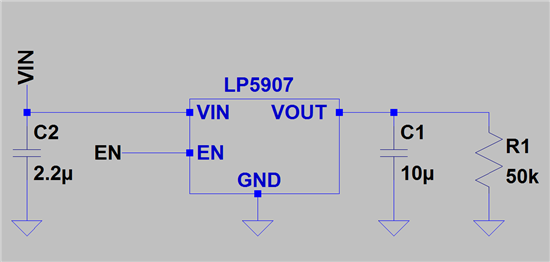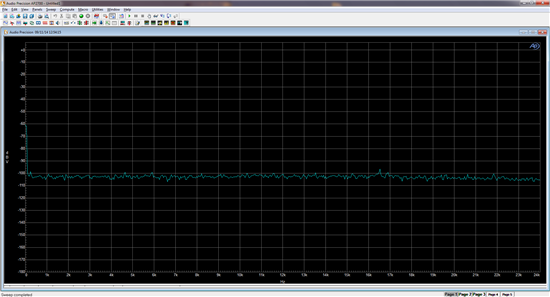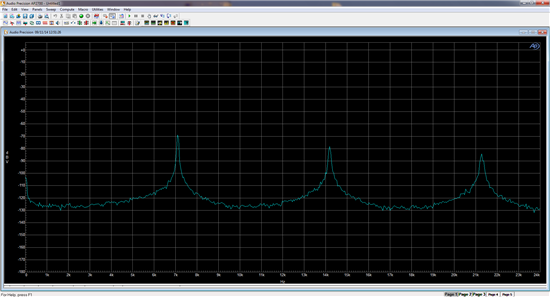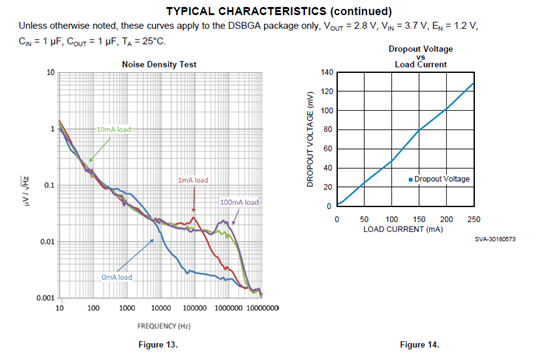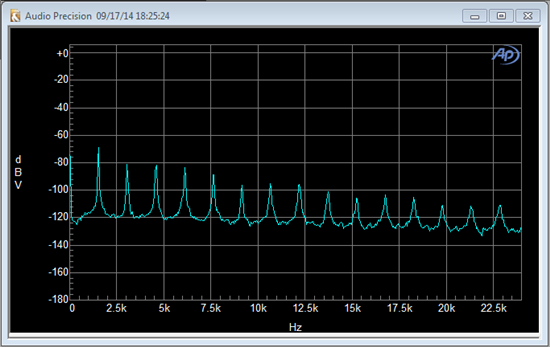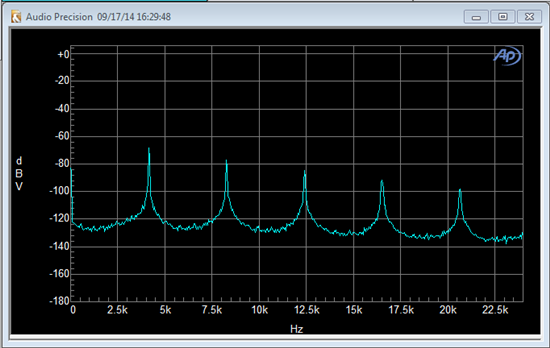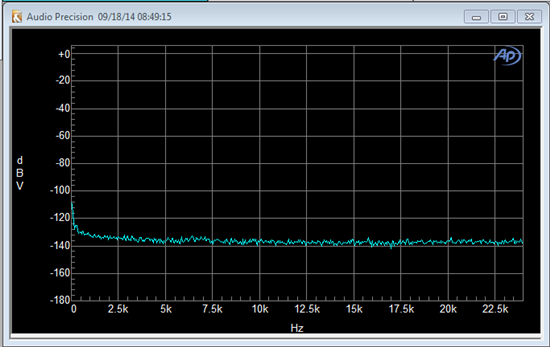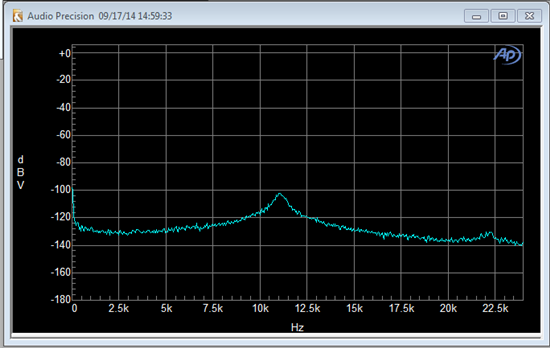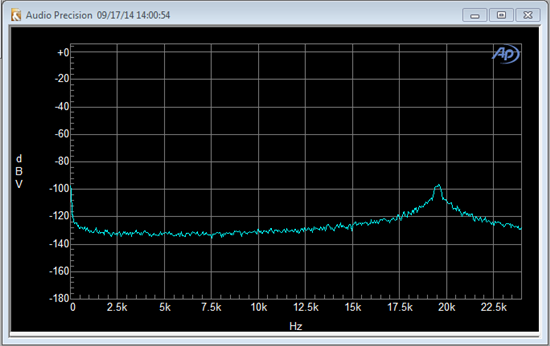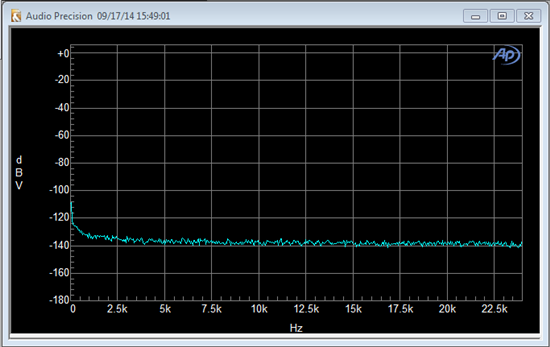I am having an issue with noise generated by the LP5907SNX-3.3/NOPB LDO on a current project. This part was selected for its ultra-low-noise characteristic. However, I am seeing strong periodic noise generated at the output. Below is a simplified schematic:
In my circuit, VIN is 4.0 V and VOUT is 3.3 V. The frequency and level of the periodic noise appears to vary from component to component. In some devices it is a broadband hump and within 10~20 dB of the noise floor. In the worst devices, it is a fairly narrow peak with strong harmonics. The periodic noise is load-dependent and roughly inversely proportional with the R and C values. Thus, I can move the noise out of my band of interest (24 kHz audio) by placing a small parallel resistive load in my circuit. When I use a ~1 kΩ load, the periodic noise moves completely out of band and I see a relatively flat ~140 dBV noise floor. I chose a relatively aggressive 1 kΩ for my project, because there is part-to-part variation in the noise and I want to be confident that the solution will work across all devices. However, that is an extra ~3 mA that is unnecessarily dissipated.
The output and input capacitor part numbers are
C1 GRM31CR71C106K
C2 GRM21BR71E225k
I did read in the LP5907 datasheet that a very low ESR output capacitor is required for stability, so I tried a variety of lower-ESR capacitors and parallel capacitor combinations, but this seemed to have no effect on the noise. The datasheet says that the input voltage should be at least 1.0 V higher than the output voltage, so I swept VIN from 4.0 V to 5.0 V, but observed no effect on the noise. There is also a note suggesting that the input capacitance should be at least as large as the output capacitance, so I increased the input capacitance to 10 μF and observed no effect on the noise.
Does someone have any thoughts on why this is occurring and if there are any alternative methods of mitigating the noise? The total noise I am measuring is about 570 μV, significantly higher than the 10 μV in the datasheet.
VIN noise:
VOUT noise:


